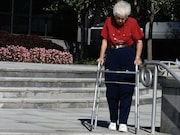1 in 4 in U.S. Has a Disability, CDC Reports


THURSDAY, Aug. 16, 2018 — One in four American adults (61 million people) has a significant physical or mental disability, the federal government reported Thursday. And these disabilities are more prevalent among women, people in the South, and those living in poverty.
Researchers at the U.S. Centers for Disease Control and Prevention analyzed 2016 data on six types of disability:
- Mobility (serious difficulty walking or climbing stairs).
- Cognition (serious difficulty concentrating, remembering, or making decisions).
- Serious difficulty hearing.
- Serious difficulty seeing.
- Independent living (difficulty doing errands alone).
- Self-care (difficulty dressing or bathing).
Mobility is the most common type of disability, affecting one in seven adults. The next most common disabilities are cognition, difficulty with errands, hearing, vision and self-care, the report found.
“At some point in their lives, most people will either have a disability or know someone who has one,” Coleen Boyle, director of the CDC’s National Center on Birth Defects and Developmental Disabilities, said in an agency news release.
“Learning more about people with disabilities in the United States can help us better understand and meet their health needs,” Boyle added.
The report, the first of its kind, found that disability is more common among women, American Indians/Alaska Natives, adults with lower incomes, and adults living in the South.
Disability increases with age, affecting about two in five adults 65 and older. But compared with middle-aged and younger adults with disabilities, older adults with disabilities are more likely to have health insurance and a primary care doctor, and to have received a routine health checkup during the previous 12 months, the researchers said.
The lower a person’s income, the more likely they are to have a disability, the findings showed. For example, mobility disability is nearly five times more common among adults aged 45 to 64 who are living below the poverty level compared with those whose income is twice the poverty level.
In addition, there are disability-specific differences in access to health care, particularly among young and middle-aged adults. For example, adults with vision disability have the least access to health care, while those with self-care disability have the most access to care.
The study was published in the Aug. 17 issue of the CDC’s Morbidity and Mortality Weekly Report.
According to Dr. Georgina Peacock, director of the CDC’s Division of Human Development and Disability, “People with disabilities will benefit from care coordination and better access to health care and the health services they need, so that they adopt healthy behaviors and have better health.”
So, Peacock said, “Research showing how many people have a disability and differences in their access to health care can guide efforts by health care providers and public health practitioners to improve access to care for people with disabilities.”
More information
The CDC has more on disabilities.
Posted: August 2018
Source: Read Full Article




